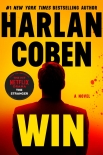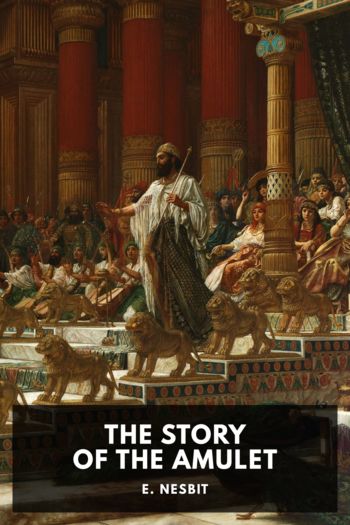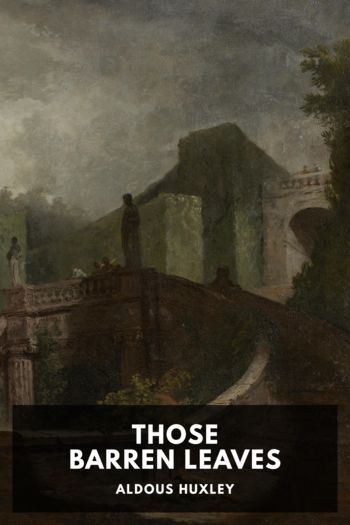WIN, Coben, Harlan [ebook and pdf reader .txt] 📗

Book online «WIN, Coben, Harlan [ebook and pdf reader .txt] 📗». Author Coben, Harlan
Lopez and Young start off by giving me the customary silent treatment. The theory is a rather simple one: Most people hate silence and will do anything to break it, including saying something incriminating.
I’m almost insulted that they are trying this tactic on me.
I don’t engage, of course. I settle into the backseat, steeple my fingers, and stare out the car window as though I’m a tourist on my first visit to the big bad city.
Finally, Young says, “We know about you.”
I reach into my jacket pocket and press down on my phone. The conversation is now being recorded. It will go straight to the cloud in case one of my new FBI friends discovers that I’m recording and opts for deletion or phone breakage.
I am nothing if not prepared.
Young turns to face me. “I said, we know about you.”
Silence from me.
“You used to do some stuff for the Bureau,” she says.
That they know anything about my relationship with the Federal Bureau of Investigation surprises me, though I don’t show it. I did work for the FBI immediately after I graduated from Duke University, but my work was highly classified. The fact that someone told them—it had to be someone on top—again informs me that this murder case is out of the ordinary.
“Heard you were good,” Lopez says, catching my eye in the rearview mirror.
Moving quickly now from the silent treatment to flattery. Still I give them nothing.
We drive up Central Park West, my home street. The odds now seem slim that this murder has to do with Big T. For one thing, I know that Big T survived, albeit not intact. Second, if the feds wanted to question me for anything related to that, we would be headed downtown toward their headquarters at 26 Federal Plaza; instead, here we are, traveling in the opposite direction, toward my own abode in the Dakota, on the corner of Central Park West and Seventy-Second Street.
I consider this fact. I live alone now, so it is not as though the victim could be a loved one. It could be that the courts had issued some sort of search warrant for my residence and found something incriminating that they wish to spring on me, but this too seems unlikely. One of the Dakota doormen would have warned me of such an invasion. One of my hidden alarms would have buzzed my phone. I’m also not careless enough to leave around anything that might implicate me for authorities to locate.
To my surprise, Lopez drives us past the Dakota without a pause. We continue uptown. Six blocks later, as we reach the Museum of Natural History, I spot two NYPD squad cars parked in front of the Beresford, another esteemed prewar apartment building, at Eighty-First Street.
Lopez is now studying me in the rearview mirror. I look at him and frown.
The Beresford doormen wear uniforms seemingly inspired by Soviet generals from the late seventies. As Lopez pulls to a stop, Young turns to me and asks, “Do you know anybody in this building?”
My reply is a smile and silence.
She shakes her head. “Fine, let’s go.”
With Lopez on my right and Young on my left, they escort me straight through the marble lobby and into an already-waiting wood-paneled elevator. When Young presses the button for the top floor, I realize that we are heading into rarefied air—figuratively, literally, and mostly monetarily. One of my employees, a vice president at Lock-Horne Securities, owns a “classic six” apartment on the fourth floor of the Beresford with limited views of the park. He paid over five million dollars for it.
Young turns to me and says, “Any clue where we are headed?”
“Up?” I say.
“Funny.”
I bat my eyes in modesty.
“The top floor,” she says. “Been there before?”
“I don’t believe so.”
“Do you know who lives there?”
“I don’t believe so.”
“I figured all you rich guys know each other.”
“Stereotyping is wrong,” I say.
“But you’ve been to this building before, right?”
The elevator door opens with a ding before I bother not replying. I figured that we would be let out into a grand apartment—elevators often open directly into penthouse suites—but we are in a dark corridor. The wallpaper is a heavy maroon fabric. The open door on the right leads to a corkscrew staircase of wrought iron. Lopez goes up first. Young signals for me to follow. I do so.
There is junk everywhere.
Six-foot stacks of old magazines, newspapers, and books line both sides of the stairs. We need to go up single file—I spot a Time magazine from 1998—and even then we have to turn our bodies to the side to slip through the narrow opening.
The stench is suffocating.
It is a cliché, but it is a cliché with merit: Nothing smells like a decaying human body. Young and Lopez both cover their noses and mouths. I do not.
The Beresford has four turrets, one atop each corner of the edifice. We reach the landing of the northeastern one. Whoever lives here (or perhaps more accurately, lived), up high on the top level of one of the most prestigious buildings in Manhattan, was a full-fledged hoarder. We can barely move. Four crime technicians in full garb with the shower caps are attempting to comb and climb through the clutter.
The corpse has already been zipped up. I’m surprised that they haven’t moved it out of here yet, but everything about this is odd.
I still have no idea why I’m here.
Young shows me a photograph of what I assume is the dead man—eyes closed, white sheet pulled up high on the body, right up to the chin. He was an older man with white-to-gray skin. I would venture





Comments (0)